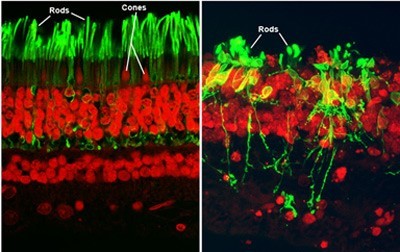
Applied Genetic Technologies Corp. (AGTC) plans to launch a pivotal trial of its gene therapy candidate for X-linked retinitis pigmentosa (XLRP) by the end of this year, following strong positive six-month data from its ongoing Phase I/II trial.
Those data, according to AGTC, showed durable improvement in visual function in patients six months after being treated centrally with the gene therapy candidate, reinforcing positive six-month topline interim efficacy results the company released in September.
The September data were reported from 17 of 25 patients assessed in the Phase I/II trial (NCT03316560). The 17 consisted of eight peripherally treated patients who showed stable visually function through six months, and nine centrally treated patients who showed improvement in visual function as measured by microperimetry and/or Best Corrected Visual Acuity (BCVA) through three months.
Visual function was defined as all ways of measuring the function of the eyes, including visual sensitivity, visual acuity, contrast sensitivity, and color vision.
The newly-released six-month data show that all nine centrally treated patients had stable or improving visual acuity, with 78% seeing a 5 letter or more improvement—a result that AGTC says has not been reported in other XLRP trials.
“We’re really thrilled with the data,” AGTC president and CEO Sue Washer told GEN Edge. “We think [these] data [are] very, very exciting and very encouraging for the patients who have XLRP, and the chances that we’ll be able to help them to have a better quality of life.”
All nine patients treated centrally also showed measurable and improvements in visual sensitivity for four of eight patients that were deemed evaluable—the same four patients discussed in September, which according to AGTC, indicates encouraging signs of a durable biologic effect. The company defines patients as responders with improvement in visual sensitivity within the treatment area that is beyond the testing variability on at least two different test dates.
Patients who improved in either visual sensitivity or BCVA also anecdotally reported noticeable improvement in visual function including greater clarity and reduced night blindness, AGTC added.
“Very encouraging”

“We’re seeing a statistically meaningful improvement in the visual sensitivity, and that’s what we currently expect will be an endpoint for our pivotal trial,” Washer explained. “But we’re also saying that we’re seeing a very encouraging and supportive sign of improvement in visual acuity.”
Especially encouraging, Washer said, was that the new data are more sustained and show durability: “When you have the same positive data at multiple test points, it gives you more confidence that the data is real, that the effect is real.”
“It strengthens our confidence in the data in the centrally dosed patients. The product is having an effect, and there’s biological activity,” Washer also said.
Washer added, however, that the data did not necessarily sway AGTC toward central dosing of the XLRP gene therapy over peripheral dosing going forward. The efficacy of central over peripheral dosing cannot be determined, she said, until AGTC is able to assess the effects of the gene therapy on centrally and peripherally dosed patients. The next point for doing so will be at 12 months following treatment, based on the trial protocol.
The Phase I/II study continues to recruit patients and is expected to ultimately have somewhere between 27 and 30 patients, Washer added. AGTC will hold an end-of-Phase II meeting with the FDA in the second quarter to finalize the protocol for the pivotal trial.
“We expect that it will be two groups randomized into one of the two groups. It will last a year,” Washer said. “We expect the primary endpoint will be visual sensitivity, the microperimetry, and that there will be secondary endpoints of safety and other efficacy endpoints.”


